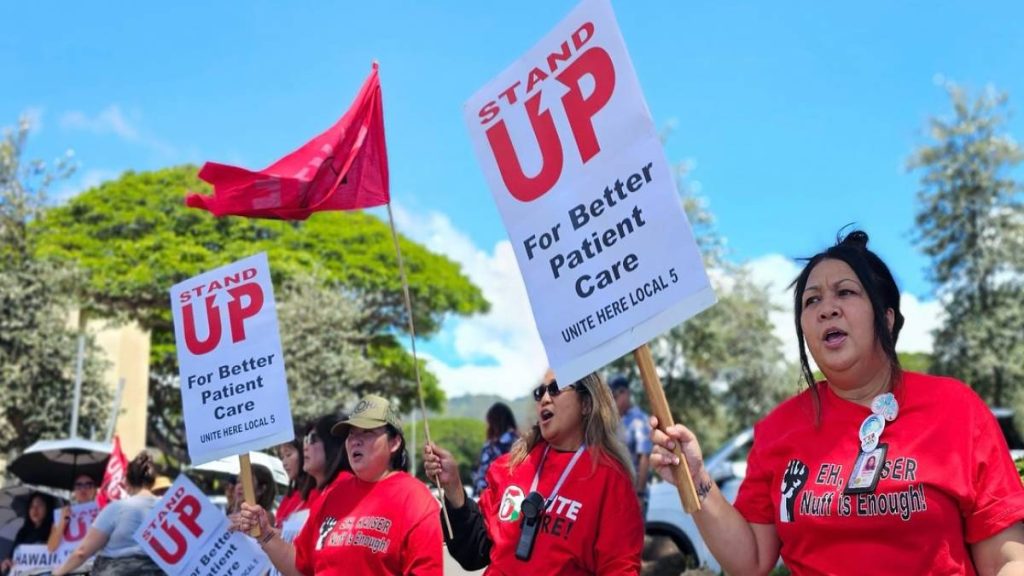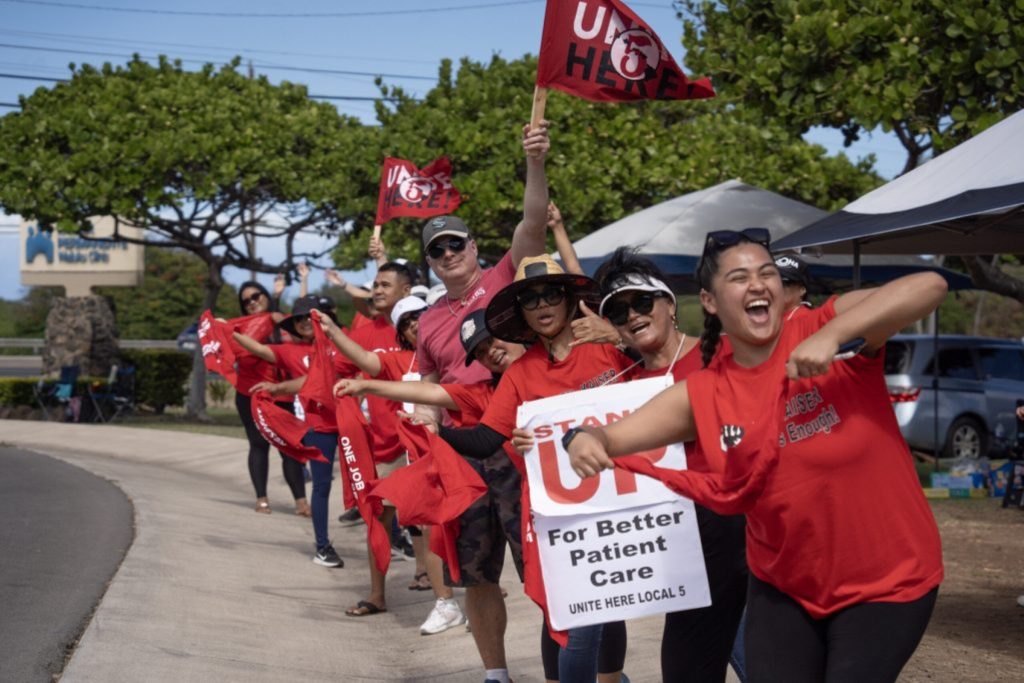New momentum behind Kaiser nurses, health care professionals after 5-day strike
Thousands of frontline caregivers who work at more than 500 Kaiser Permanente hospitals and clinics throughout California and Hawai‘i will return to the bargaining table for a new contract backed by community support and a national patient safety mandate.

More than 30,000 Kaiser registered nurses and health care professionals in both states represented by the United Nurses Associations of California/Union of Health Care Professionals on Oct. 19 concluded a historic 5-day — sending a message to Kaiser that patient care and safe staffing must come first.
The strike — which began Oct. 14 — drew powerful support from patients, community members and elected officials.
Union members say new standards on staffing — The Joint Commission, which is a global driver of quality improvement and patient safety in health care —released during the strike by The Joint Commission — a global driver of quality improvement and patient safety in health care — will reshape the landscape of contract negotiations moving forward.
“The Joint Commission has finally said what nurses have known all along: unsafe staffing is unsafe care,” said registered nurse and United Nurses Associations of California/Union of Health Care Professionals President Charmaine Morales in a release about the strike’s end. “Employers like Kaiser can no longer treat staffing like a budget line.”
Kaiser executives throughout the week focused on percentages and costs — avoiding mention of their own billions in reserves.
A new analysis by nationally recognized watchdog The Center for Media and Democracy highlights the scale of Kaiser Permanente’s financial position, reporting that the health care provider is sitting on $67.4 billion in reserves, up from $40 billion just 4 years ago.
Kaiser reported total gains of $5.5 billion from investments and other income in 2024, including $569 million in operating income, as reported Oct. 18.
A notable portion of this growth is tied to investment activity: between December 2023 and June 2025, Kaiser’s allocations to hedge funds increased $1.1 billion, and private equity holdings rose by $1.9 billion.
Meanwhile, United Nurses Associations of California/Union of Health Care Professionals and other Alliance of Health Care Unions caregivers spent the week focusing on the real issue: patient safety.

The union message cut through: unsafe staffing hurts patients, and solutions can no longer wait.
The strike might be finished, but the fight for patient safety is not.
Caregivers returned to work Oct. 20 united, energized and ready to keep up the pressure for a fair contract that puts their patients first.
United Nurses Associations of California/Union of Health Care Professionals will return to the national bargaining table Oct. 28-29.
“We stood strong for 5 days and made sure the world heard us,” Morales said. “This strike wasn’t just about numbers on a contract — it was about the right to provide safe care to every patient who walks through those doors.”
The report by The Center for Media and Democracy also notes that Kaiser’s large reserve levels are uncommon in scale among nonprofit health systems.
Analysts suggest this could contribute to ongoing discussions about how nonprofit health care organizations manage and deploy financial resources to support care delivery, infrastructure and community investment.
Oakland, Calf.-based Kaiser Permanente is one of the largest integrated health care providers in the United States. The nonprofit health system has more than 12 million members throughout multiple states and employs more than 300,000 people.
“We recognize our employees’ hard work and have offered a strong contract proposal that pays off immediately and over the long term,” Kaiser said Oct. 15, the day after the strike began.
Leadership added that to afford higher wages in their offer, Kaiser would reduce internal costs and optimize operations. But the additional wage costs the unions demand would mean even more — and unavoidable — rate increases for the health care provider’s members and customers.
They called the strike unnecessary, and said it was “designed to disrupt the lives of our patients — the very people we are all here to serve.”
The health care provider, however, left room for continued future conversations.
“We remain committed to bargaining in good faith for a fair agreement that balances fair pay with high-quality, affordable care,” Kaiser said in its statement.
News reporter Nathan Christophel contributed to this story.







